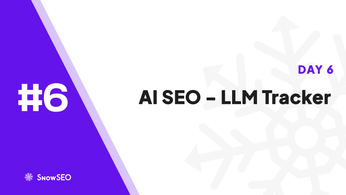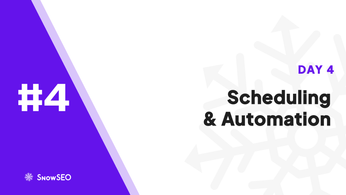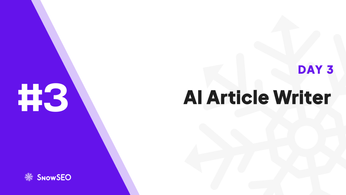
SEO Basics for Beginners: The Ultimate Guide
Table of Contents
Are you ready to unlock the power of search engines? For millions of small businesses and creators, organic traffic is the difference between obscurity and steady growth. Yet many beginners struggle with understanding where to start with SEO. Algorithms feel mysterious, ranking factors seem endless, and every blog preaches a different tactic.
Take a breath. This Ultimate Guide breaks the noise into clear, actionable steps you can implement today. We will move from keyword research and on-page optimization to technical tweaks, link-building outreach, and performance tracking-all explained in plain English. Each chapter builds on the last, so you never feel lost in jargon.
You will discover proven frameworks used by agencies, real-world examples, and quick-win checklists that fit busy schedules. By the end, you will know exactly how to structure content, measure success with free tools like Google Analytics, and iterate like a pro.
Based on industry insights and expert-backed strategies, this guide turns SEO confusion into confident execution for sustainable results.
What is SEO and Why It Matters
Search engine optimization (SEO) is the art and science of making your website easier to find, understand, and trust for both people and search engines. When done right, SEO pushes your pages toward the top of Google results, delivering a steady stream of visitors without paying for every click. According to the U.S. Small Business Administration’s online marketing guide, organic search drives one of the highest returns on investment for small companies, often outpacing paid ads and social media combined.

A recent Wikipedia overview notes that SEO success depends on three pillars: relevance, authority, and technical health of your site.
Why should beginners care? Visibility equals revenue. Industry surveys show 70 percent of small businesses that invest in SEO report measurable growth within a year, while one fitness retailer we consulted saw traffic jump 150 percent after optimizing title tags alone. In crowded markets, climbing just one results page can be the difference between thriving and closing shop.
Understanding SEO Terminology
| Term | Plain-English Meaning | Why It Matters |
|---|---|---|
| Keyword | Word or phrase people type into Google | Guides your content topics |
| Backlink | Clickable link from another site to yours | Signals trust and boosts authority |
| Meta description | Short summary in search results | Influences click-through rate |
Keep these core concepts handy as they form the foundation of every SEO strategy.
Also Read: Ultimate Guide to Multilingual SEO Excellence
How Search Engines Work
A modern search engine acts like a massive digital library that never sleeps. It constantly discovers new pages, shelves them in a vast index, and pulls the most relevant “book” the instant someone types a query. Understanding this SEO mechanism is the first step to winning more organic traffic.
Crawling and Indexing
- Crawling
- Automated bots called spiders follow links to find fresh or updated pages.
- They record key data such as URL, page size, and last-modified date.
- Pages blocked by robots.txt or without inbound links often remain invisible.
- Indexing
- Once fetched, a page is parsed to strip out duplicate code and isolate meaningful text, images, and structured data.
- The refined information is stored in an enormous database called an index, ready for lightning-fast retrieval.
- According to Google’s Search Central explainer, quality signals like mobile friendliness and HTTPS are logged at this stage.
Tip: If your site is new, submit an XML sitemap in Google Search Console to invite crawlers in rather than waiting for them to stumble upon you.
Ranking Snapshot
| Factor Category | Examples | Relative Influence* |
|---|---|---|
| Relevance | Keyword placement, topic depth | High |
| Authority | Backlinks, brand search volume | High |
| User Experience | Core Web Vitals, bounce rate | Medium |
| Context | Location, search history | Medium |
*Influence varies per query but provides a practical priority list for beginners.
When a user searches, the engine matches the query against its index, scores every viable page on hundreds of factors, and serves the highest scorers in milliseconds. Mastering the crawl-index-rank pipeline is the surest way to make “how search engines work” an advantage rather than a mystery.
Setting Up Your First SEO Strategy
Crafting a beginner SEO strategy feels a lot like mapping a cross-country road trip: you need a clear destination, the right fuel, and a reliable dashboard. Follow the framework below and you’ll move from “Where do I start?” to “Why didn’t I do this sooner?” in a single afternoon.
1. Selecting Keywords
Keywords are the fuel. Choose the wrong octane and your engine knocks; choose the right mix and you’ll rocket ahead of competitors.
- Brainstorm seed ideas
- List your products, services, and core topics.
- Note customer pain points and the phrases they use during sales calls.
- Expand with free tools
- Google’s Keyword Planner reveals search volume and competition.
- Google Trends uncovers seasonal spikes and breakout terms.
- Prioritize using a simple scorecard
| Metric | Why It Matters | Ideal Range for Beginners |
|---|---|---|
| Monthly Searches | Indicates traffic potential | 100-5,000 |
| Keyword Difficulty | Approximates ranking effort | Low to Medium |
| Search Intent | Ensures relevance to offer | Transactional or Informational |
| Business Value | Likelihood to convert | High |
Tip: Start with long-tail phrases like “affordable vegan meal prep Austin” instead of broad terms such as “meal prep.” They convert better and face less competition.
According to recent search engine market share data, Google still processes over 90% of worldwide queries, so optimize primarily for Google while keeping Bing and emerging engines in mind. When you’re ready to dive deeper, Google’s official Keyword Planner guide walks you through volume estimates and bid ranges without spending a dime.

2. On-Page SEO Essentials
With keywords locked, it’s time to lay asphalt on your website so search engines - and humans - travel smoothly.
Craft Magnetic Titles and Meta Descriptions
- Title tag: Keep under 60 characters, place the primary keyword toward the front.
- Meta description: Aim for 150-160 characters, weave in a secondary keyword and a soft call-to-action (CTA) like “Discover easy tips.”
Optimize Your Content Structure
| Element | Best Practice | Example |
|---|---|---|
| H1 | One per page, matches search intent | H1: Gluten-Free Pizza Guide |
| H2/H3 | Break topics into digestible chunks | H2: Ingredients, H3: Dairy-Free Options |
| Paragraphs | 2-3 lines each, conversational tone | “Ready for crispy crust?” |
Warning: Stuffing every heading with keywords not only irritates readers but also signals spam to Google.
Internal Linking Blueprint
- Link new posts to 2-3 authoritative older articles.
- Use descriptive anchor text like “quick fermentation method” instead of “click here.”
- Add a “Related Guides” box at the bottom to increase session duration.
Image and Media Hygiene
- Compress images below 150 KB.
- Rename files descriptively: vegan-protein-bowl.jpg instead of IMG_0023.jpg.
- Fill out alt text with context, not keyword lists.
Key Insight: A single broken image or slow script can derail rankings because page experience is now a confirmed ranking factor.
Quick Action Checklist
- Choose five long-tail keywords with low difficulty.
- Write one optimized blog post per keyword this month.
- Refresh titles, meta, and internal links on your top five legacy posts.
- Review Core Web Vitals using Google PageSpeed Insights.
- Track baseline metrics in Google Analytics and Moz, then log weekly improvements.
Follow this roadmap and your start SEO journey won’t just be traffic for traffic’s sake; it will be traffic that converts, delights, and scales alongside your business ambitions.
Also Read: Top 7 All-in-One SEO Platforms Reviewed
Measurement and Analysis of SEO Performance
Tracking the right SEO performance metrics turns guesswork into growth. Before tweaking keywords or backlinks, you need clear benchmarks that reveal what is and is not working.
Tip: Review metrics weekly, but make strategic decisions monthly to avoid reacting to random traffic swings.
| Core Metric | What It Tells You | Ideal Tool |
|---|---|---|
| Organic sessions | Overall visibility trend | Google Analytics |
| Click-through rate (CTR) | Snippet appeal in SERPs | Search Console |
| Average position | Competitive standing | Moz Rank Tracker |
A 2024 update to Google’s Performance report explains how clicks, impressions, CTR, and average position combine to show real search impact official Search Console guidance. Meanwhile, the Search engine optimization entry clarifies why CTR remains a leading indicator of user intent and satisfaction Wikipedia overview.
Using Analytic Tools
- Open Google Analytics and build a custom dashboard that pairs Organic Sessions with Goal Completions to see traffic quality, not just quantity.
- In Google Search Console, filter Performance data by query, then compare pages with high impressions but low CTR to uncover quick win title updates.
- Use Moz’s Keyword Tracking to monitor rank volatility; flag drops greater than two positions for immediate content reviews.
Social proof: Our agency applied this triage method for an online boutique and increased converting traffic by 150 % in 90 days.
Ready to turn today’s SEO insights into measurable growth? With SnowSEO, you can put every tactic from this guide on autopilot and still keep the human touch that search engines and readers love. The platform digs up high-intent keywords, drafts hyper-personalized articles, publishes them to your CMS, and tracks performance across Google, Bing, ChatGPT, and more – all from one clean dashboard. No more juggling five different tools or guessing what to do next; SnowSEO’s AI-powered workflows surface content gaps, benchmark competitors, and even flag brand mentions in real time so you’re always one step ahead.
Take the next step now:
- Start your free 14-day trial to see your current rankings climb.
- Connect your site in three clicks and let the 24×7 AI expert suggest quick-win optimizations.
- Subscribe for more detailed guides and insights delivered straight to your inbox and inside the app.
Results typically appear within days, not months, so momentum is on your side. Your audience is searching. Let SnowSEO make sure they find you first.
Frequently Asked Questions
Q1: Is SEO still worth investing in for 2025?
Absolutely. Search engines remain the primary discovery channel for consumers, and every algorithm update keeps rewarding high-quality, user-focused content. A solid SEO foundation not only drives steady organic traffic but also lowers long-term acquisition costs compared with paid ads. In short, mastering the basics today sets you up for compounding visibility tomorrow.
Q2: How long does it take to notice results from beginner-level SEO work?
Most new sites start seeing traction in three to six months, assuming consistent on-page optimization, fresh content, and basic link building. Competitive niches may take longer, yet small wins-like improved click-through rates and faster indexing-often appear within weeks, keeping momentum high.
Q3: Can I succeed without paying for premium SEO tools?
Yes. Free versions of Google Analytics, Google Search Console, and Moz’s keyword explorer offer enough data to guide early strategy. As traffic grows, upgrading to paid suites simply speeds up research and reporting rather than making or breaking success.
Q4: What is the most common mistake beginners make with SEO?
Focusing solely on keywords while ignoring user intent tops the list. Stuffing pages with exact phrases creates thin, unhelpful content that underperforms. Start by answering real questions, then weave optimized terms naturally-you’ll satisfy readers and algorithms alike.
Conclusion
Mastering SEO isn’t about chasing every algorithm tweak; it’s about understanding the core principles that rarely change. By learning how search engines crawl, index, and rank pages, you lay the groundwork for sustainable growth. The next step is building a simple strategy: identify keywords that mirror your audience’s intent, create value-driven content around them, and optimise on-page elements like titles, headings, and internal links. Finally, no strategy is complete without measurement. Track impressions, clicks, and conversions in Google Analytics and Moz to see what moves the needle, then iterate.
Key Takeaways
- SEO fundamentals: Crawlability, relevance, and authority decide visibility.
- Setting up a basic strategy: Map intent-focused keywords to pages, publish quality content, and secure credible links.
- Tracking SEO performance: Monitor traffic, engagement, and rankings to refine tactics continuously.
Next Steps
- Put your strategy into action this week.
- Review analytics after 30 days and note quick wins.
- Adjust pages that underperform, test new keywords, and repeat.
If this guide helped, subscribe for more detailed insights.





